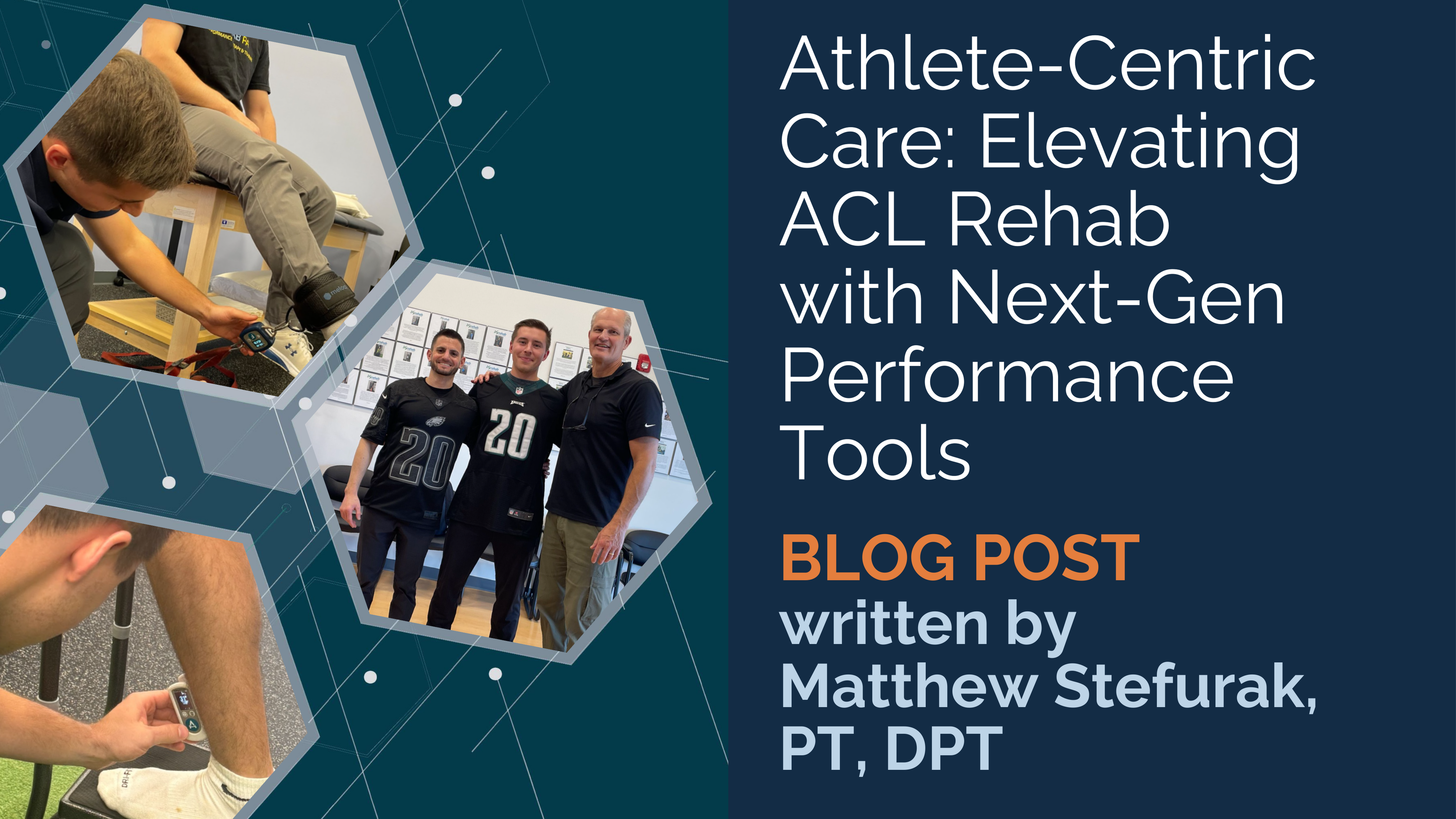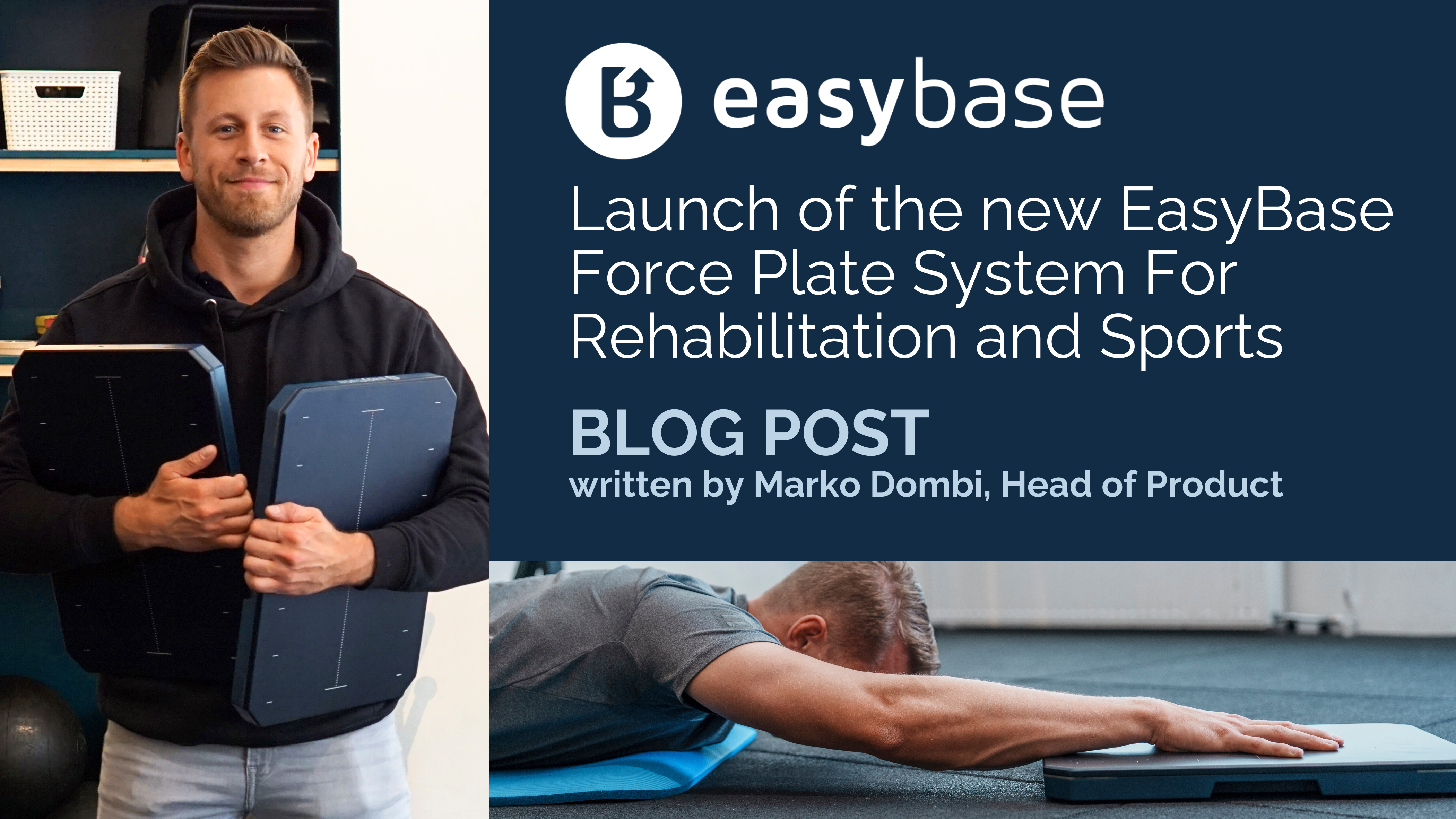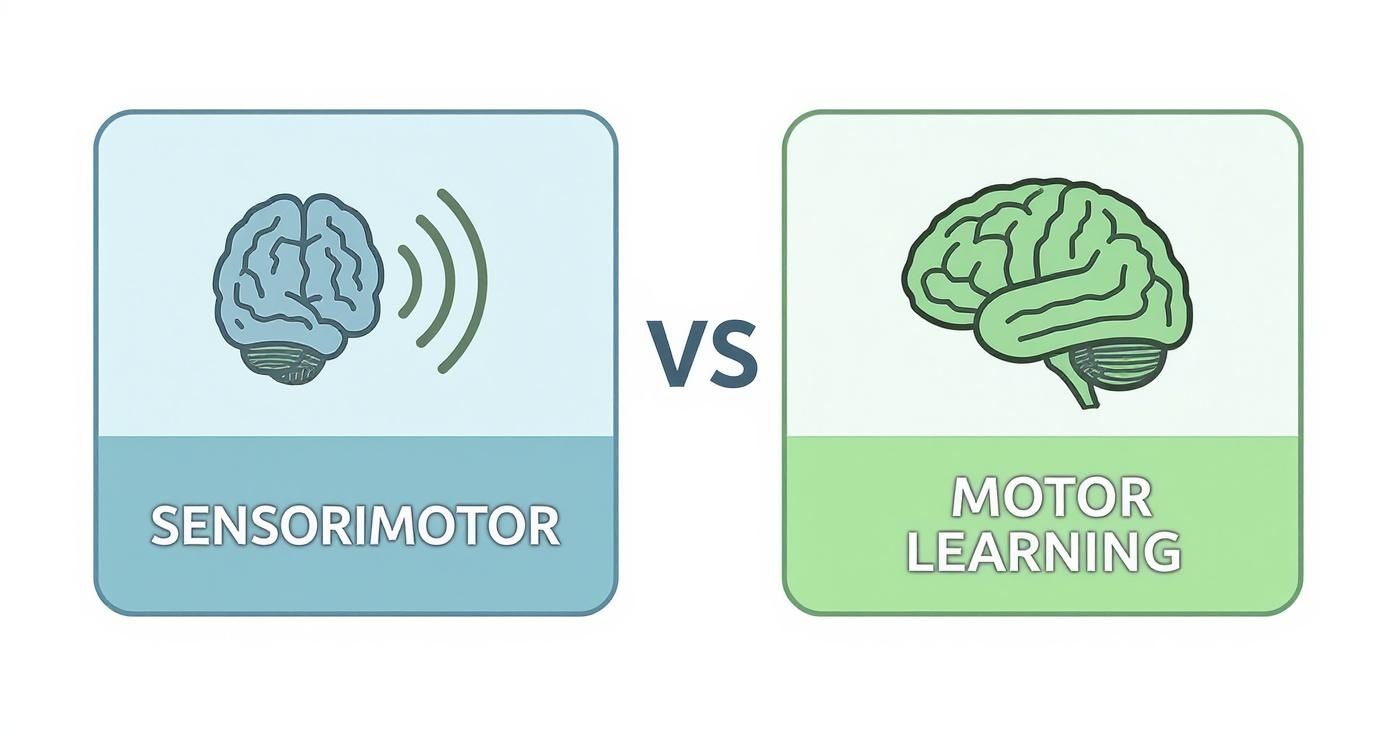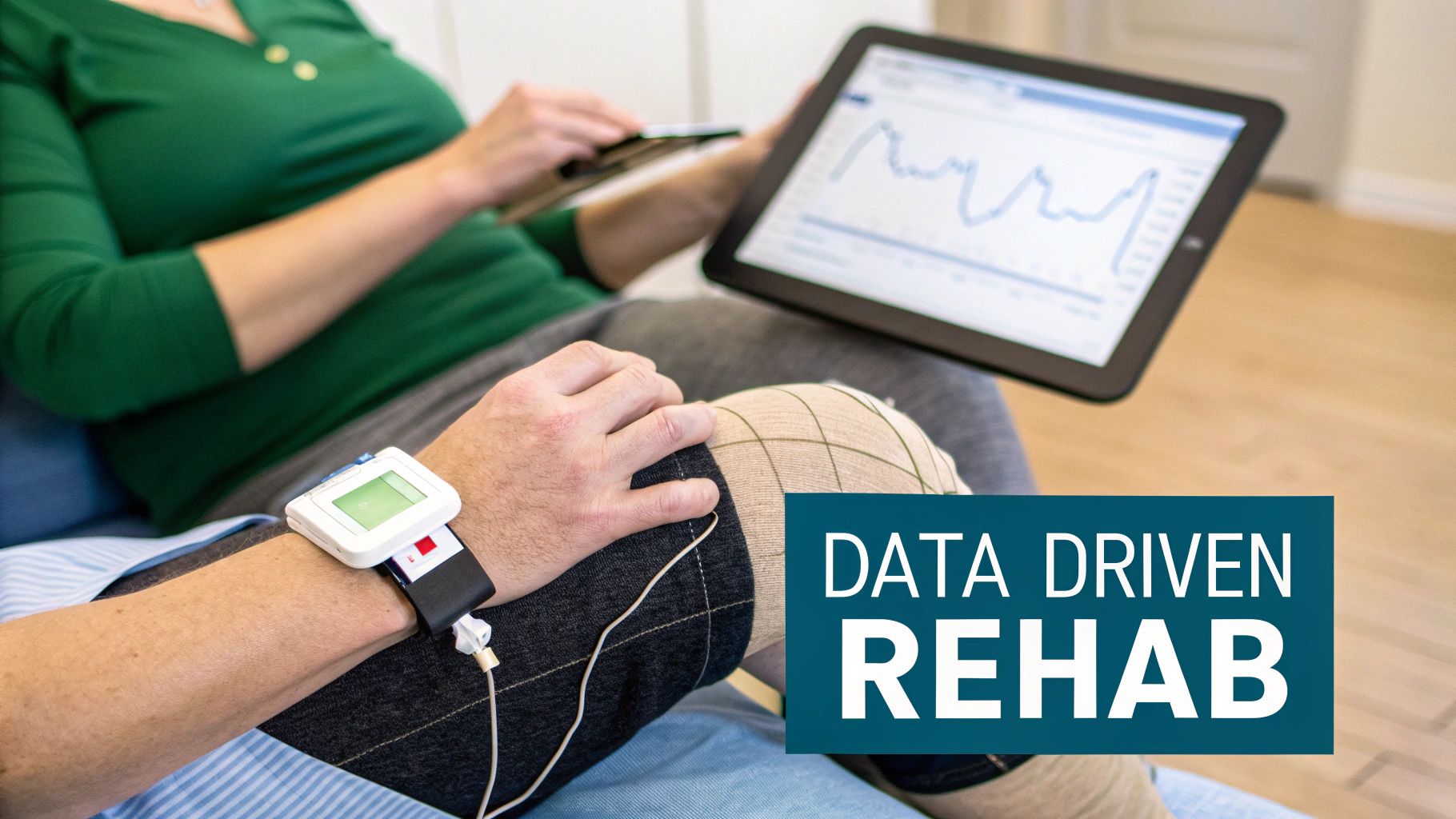-

, by Marko Dombi Athlete-Centric Care: Elevating ACL Rehab with Next-Gen Performance Tools
-

, by Marko Dombi Launch of the EasyBase - Force Plate System For Rehabilitation and Sports
-

, by Marko Dombi Interview with the researcher | Enhanced Paper Grip Test Project
A Guide to Rehabilitation Frame of Reference
- , by Team Meloq
- 18 min reading time

Discover how the rehabilitation frame of reference guides physiotherapy. Learn key models and see how they are applied in real-world recovery.
At its core, a rehabilitation frame of reference is the clinical blueprint a physiotherapist uses to navigate a patient's recovery journey. It is a structured approach that lays out the core principles and practical steps for everything from initial evaluation to setting realistic goals and rolling out a logical, evidence-based treatment plan.
The Blueprint for Patient Recovery
Imagine trying to explore a new city without a map. You might eventually find your destination, but the trip would be inefficient and stressful. A solid rehabilitation frame of reference acts as that map for a therapist. It provides a clear, systematic route to ensure every clinical decision is purposeful and aimed directly at the patient's best possible recovery.

This kind of structured thinking is not new. The professionalization of physical and occupational therapies began in the early 20th century, largely driven by the need to care for veterans returning from World War I. This history underscores a long-standing mission within the profession: to develop systematic, repeatable methods to tackle complex patient needs.
Why a Framework Is So Essential
A guiding framework does more than just keep a treatment plan organized; it is fundamental to ensuring consistency and quality of care. Without this structure, therapy could become a collection of disconnected exercises. A clear frame of reference guarantees that each intervention logically builds on the last, moving the patient steadily and progressively toward their goals.
These frameworks help clinicians answer critical questions:
- What is the root cause of this patient's limitation?
- Which therapeutic techniques will be the most effective?
- How can we objectively measure progress and show our interventions are working?
A frame of reference elevates clinical practice from guesswork to a science. It provides the "why" behind the "what," ensuring every therapeutic action is grounded in sound theory and aimed at achieving measurable results for the patient.
Ultimately, using a defined rehabilitation frame of reference turns complex theory into practical, patient-centered outcomes. It gives clinicians across physiotherapy, sports medicine, and occupational therapy a common language and methodology. To see how these concepts apply in practice, review this guide on the analysis of movement. This structured approach is the bedrock of effective, modern care.
The Biomechanical Model: Body as a Machine
One of the most intuitive frameworks used in rehabilitation is the Biomechanical Frame of Reference. It views the human body as a mechanical system.
This approach applies principles of physics—like forces, levers, and torque—to human movement. In this model, bones are the levers, joints act as the axes, and muscles generate the force that creates motion.

This mechanical perspective gives therapists a systematic way to break down movement, pinpoint physical deficits, and build targeted programs to improve strength, endurance, and range of motion. It is a remedial approach, focused on addressing the underlying physical impairment to restore function (1).
Fixing the Machine: Remediation and Compensation
When working within this framework, treatment typically follows one of two paths: remediation or compensation.
Remediation is about correcting the problem at its source. For a pitcher recovering from a shoulder injury, this means a targeted exercise program designed to strengthen the rotator cuff muscles and restore full, pain-free joint mobility. This path aims to fix the "broken" part of the machine.
On the other hand, compensation is about finding a workaround when a full fix isn't possible. An athlete with a permanent loss of ankle mobility, for instance, might learn to modify their running gait, using their hip and knee differently to maintain speed and reduce strain on the compromised joint.
The Biomechanical model provides a logical, cause-and-effect roadmap for treatment. If a specific muscle is weak (the cause), the patient will likely struggle with a particular movement (the effect). The solution is to strengthen that muscle.
The Biomechanical-Rehabilitative frame of reference is a cornerstone in occupational therapy, especially when tackling physical issues that limit daily activities. One pilot study found that individuals with more severe initial injuries saw significant improvements in their health and ability to participate in life after approximately 14 weeks of intervention based on this model. This study suggests how mechanics-focused strategies can drive substantial recovery. You can read the full study about occupational therapy intervention outcomes on UND.edu.
To understand this model, it helps to see its core principles laid out.
| Key Principles of the Biomechanical Frame of Reference |
| :--- | :--- | :--- |
| Principle | Description | Therapeutic Goal |
| Joint Range of Motion | The arc of movement available at a joint. | Restore or maintain normal joint movement. |
| Muscle Strength | The ability of a muscle to produce force. | Increase muscle power to overcome resistance. |
| Endurance | The ability to sustain physical activity over time. | Improve stamina for functional tasks. |
| Structural Stability | Maintaining proper alignment of bones and joints. | Prevent deformity and ensure safe movement. |
| Kinematics | The study of motion (position, velocity, acceleration). | Analyze and correct inefficient movement patterns. |
These principles guide clinicians in identifying what needs to be addressed to help someone return to their daily activities safely and effectively.
Quantifying the Mechanics
The power of the biomechanical approach is that it is measurable. Clinicians do not guess if a patient is getting better; they collect data. Key performance metrics are central to tracking progress.
- Strength: Can be measured through manual muscle testing, but for greater precision and objectivity, digital dynamometers are used.
- Endurance: Assessed by tracking how long a muscle can sustain a contraction or how many repetitions a patient can complete.
- Range of Motion (ROM): Objectively measured using goniometers to ensure joints are moving through their full, intended arcs.
By precisely measuring these physical capacities, clinicians can build a clear picture of a patient's limitations and, more importantly, their progress over time. For more information, see this deep dive on range of motion measurement tools. This data-driven approach turns abstract recovery goals into concrete, achievable milestones.
Rewiring the Brain: Sensorimotor and Motor Learning
While the biomechanical model sees the body as a collection of levers and pulleys, other rehabilitation frameworks focus on the central nervous system. Recovery, especially after a neurological event like a stroke, is not just about rebuilding muscle. It's about rewiring the complex circuits that link sensation to movement.
These approaches are built on the idea that movement starts in the brain. It must process a constant stream of information from our senses—touch, sight, and body position (proprioception)—before sending signals to our muscles. When this system is damaged, the brain may need to relearn how to interpret sensory feedback and generate the right motor commands.
The Sensorimotor Approach: Restoring the Connection
The Sensorimotor Frame of Reference focuses on retraining this fundamental brain-body connection. It is often used by clinicians working with patients who have experienced damage to their central nervous system. The core idea is that by providing specific sensory inputs, therapists can elicit desired motor responses.
In a therapy session, this might look like:
- Using fabrics with different textures to stimulate nerves in a patient's hand and encourage a grasping motion.
- Applying quick stretches to a muscle to help it contract.
- Manually guiding a patient's arm through a movement to help their brain remap the sequence.
The goal is to guide a patient from reflexive, uncontrolled movements toward purposeful, voluntary actions. This is a cornerstone of neuropsychological rehabilitation, a field blending cognitive assessment with tailored therapy after brain injury. With a significant number of people suffering traumatic brain injuries each year, the need for therapies that directly address the brain's role in recovery is substantial (2). You can read more on the evolution of neuropsychological rehabilitation on OUP Academic.
Motor Learning: Upgrading the Brain's Software
If the sensorimotor approach helps reconnect basic wiring, the Motor Learning Frame of Reference focuses on refining and automating movements. This framework views the brain as a system that can be reprogrammed through practice and feedback to perform tasks more efficiently.
This model is all about skill acquisition. It is less concerned with a single muscle contraction and more about perfecting a complete action, whether that's an older adult regaining the ability to walk safely or an athlete improving their golf swing.
Motor learning operates on a simple premise: practice and feedback allow the brain to create and strengthen new neural pathways, making movements smoother, more accurate, and eventually, automatic.
For instance, a therapist might have a patient practice reaching for a cup repeatedly. By offering specific feedback—"try opening your hand a little sooner"—they help the patient's brain refine the motor program for that task. With enough repetition, the movement can become second nature, freeing up cognitive energy. This principle of mindful practice is what makes this rehabilitation frame of reference effective.
Choosing the Right Framework for Recovery
In rehabilitation, there is no one-size-fits-all approach. A skilled therapist selects and blends the right tools for the specific job. The decision of which rehabilitation frame of reference to use—or how to combine them—is driven by the patient's unique condition, their personal goals, and the root cause of their limitations.
Consider a patient with an ACL tear. Initially, their recovery will lean heavily on the Biomechanical framework. The primary goal is structural: restore the joint’s stability, rebuild muscle strength, and regain full range of motion. The body is treated like a machine that needs a mechanical repair.
But once those mechanical issues begin to resolve, the focus shifts. The athlete now needs to relearn complex movement patterns with confidence and precision. This is where the Motor Learning framework steps in, using repetition and specific feedback to help the brain's "software" run the newly repaired "hardware" effectively.
Complementary, Not Competing, Models
It is a misunderstanding to see these frameworks as competing philosophies. The most effective rehabilitation plans often weave elements from multiple models into a single, cohesive strategy. This integrated approach allows clinicians to address the full spectrum of a patient’s needs, from the physical tissues to the neural pathways that control them.
The art of modern physiotherapy lies in knowing when to focus on the hardware (Biomechanical) and when to upgrade the software (Motor Learning and Sensorimotor). A personalized plan addresses both.
This infographic helps visualize how the Sensorimotor and Motor Learning frameworks, while related, have distinct focuses.

As you can see, the Sensorimotor approach is about re-establishing the fundamental brain-body signal. Motor Learning, on the other hand, is about taking that signal and refining it into a skilled, automatic action through practice.
Comparing Rehabilitation Frames of Reference
To get a clearer picture of when a therapist might prioritize one framework over another, this table breaks down their core differences.
| Frame of Reference | Core Focus | Common Conditions | Primary Goal |
|---|---|---|---|
| Biomechanical | Physical structures: joints, muscles, and bones. | Orthopedic injuries, arthritis, muscle strains. | Remediate physical impairment and restore mechanical function. |
| Sensorimotor | CNS's ability to process sensory input for movement. | Stroke, traumatic brain injury, cerebral palsy. | Re-establish the brain-body connection for voluntary movement. |
| Motor Learning | Acquiring and refining skilled, efficient movements. | Sports performance, post-stroke skill recovery, balance training. | Automate and perfect functional motor patterns through practice. |
Ultimately, a clinician's expertise shines in their ability to transition between these frameworks, adapting the therapeutic approach as the patient progresses. This flexible strategy helps optimize every phase of recovery.
How Technology Levels Up Modern Rehabilitation
Traditional rehabilitation frameworks provide the blueprint for recovery. Modern technology provides the high-precision tools to execute that plan with greater accuracy. Digital measurement devices are closing the gap between a therapist's estimate and objective, data-driven practice, upgrading how every frame of reference is applied.

This shift is clear within the Biomechanical frame of reference. Clinicians once relied on visual estimation or manual tools. Now, portable digital goniometers and dynamometers provide instant, objective data on range of motion and muscle force.
This means we can quantify a patient's limitations with high accuracy and track their progress from one session to the next, turning abstract goals like "get stronger" into concrete, measurable outcomes.
Data-Driven Motor Learning
Technology also enhances the Motor Learning frame of reference. A core tenet of motor learning is that the brain needs quick and accurate feedback to refine movement patterns. Digital tools can provide this real-time biofeedback.
Imagine a patient working on their balance. Instead of only listening to a therapist's cues, they can stand on a force plate that displays their weight distribution on a screen. This live data stream lets them see how small postural adjustments affect their stability, which can speed up the process of relearning neuromuscular control. It creates a continuous feedback loop that can be more potent than intermittent verbal guidance alone.
Technology transforms rehabilitation by making the invisible visible. It gives patients an objective mirror of their own performance, empowering them to take a more active role in their recovery by correcting movements in real time.
Personalization and Engagement
These tools can also make rehabilitation more personal and engaging. When a patient can see their strength output increase or watch their balance score improve on a screen, it can be a powerful motivator.
This visual proof of progress can build confidence and adherence to their program. This extends beyond the clinic, as specialized fitness tracking applications can help monitor progress with home exercises.
This data-centric approach is a cornerstone of modern physiotherapy. To see where these advancements are leading, you can learn more about the future of physical therapy. By using objective measurements, therapists can build highly individualized plans that adapt as the patient improves, ensuring every exercise is dialed in to their recovery.
A Case Study in Integrated Rehabilitation
To see how a rehabilitation frame of reference works in a real-world context, let’s walk through a recovery journey. Consider a soccer player who has had surgery for an anterior cruciate ligament (ACL) tear. This scenario exemplifies how therapists blend different frameworks to guide an athlete from the operating table back to the field.
In the first few weeks after surgery, the physical therapist works almost entirely within the Biomechanical Frame of Reference. The focus is on the mechanics—repairing the "hardware" of the knee. The immediate goals are physical:
- Reduce swelling and manage pain.
- Restore the knee joint's passive and active range of motion.
- Prevent muscle atrophy, especially in the quadriceps.
To meet these targets, the therapist uses specific, focused exercises. Each intervention is designed to address the physical structures of the knee, rebuilding its ability to function as a stable, mobile joint. Progress is tracked with objective data, like measuring flexion and extension angles and checking for muscle activation.
Shifting to Motor Learning
After a few months, once the knee has healed and some strength has returned, the therapist begins to shift the plan. Biomechanical principles are still used for progressive strengthening, but the main focus pivots to the Motor Learning Frame of Reference. The mechanical parts are healing, but now the brain must relearn how to use them for complex, sport-specific movements.
This next phase is about practice, feedback, and repetition. The therapist introduces drills that challenge neuromuscular control, starting small and building up to more dynamic movements.
- Initial Stage: Simple exercises like single-leg balance to retrain the proprioceptive feedback loop.
- Intermediate Stage: Controlled jumping and landing, with the therapist giving verbal and hands-on cues to ensure proper form.
- Advanced Stage: Running, cutting, and pivoting drills that simulate game-like conditions.
Each repetition helps forge stronger neural pathways, making these movements smoother and more automatic. This process is vital for rebuilding an athlete's confidence and reducing the risk of re-injury. The brain has to learn to trust the repaired knee again. For more on obtaining precise data on muscle strength, see this guide on the dynamometer for muscle testing.
This integrated approach is where the art of rehabilitation shines. It’s not about picking one framework over another, but knowing how and when to layer them. The therapist first rebuilds the physical foundation (Biomechanical), then teaches the brain how to control it with skill and confidence (Motor Learning).
This case study shows that a solid recovery plan is dynamic. By tackling both the physical injury and the neuromuscular control needed for high-level performance, the therapist paves a complete, holistic path for a safe and successful return to sport.
Common Questions from the Clinic
Here are answers to some questions we hear about putting rehabilitation frames of reference into practice.
Is One Frame of Reference "Better" Than the Others?
No single framework is universally "best." The right choice is always dictated by the patient—their specific injury, the cause of their limitations, and their goals (1).
The Biomechanical frame of reference is well-suited for an orthopedic issue like a muscle tear, but a Sensorimotor approach is often more appropriate for someone recovering from a stroke. A skilled therapist knows which tool to use and when, often blending multiple frameworks as a patient’s needs change.
How Do Therapists Choose a Framework?
Choosing the right rehabilitation frame of reference is central to a therapist's clinical reasoning. The decision is made after a thorough initial assessment, which includes:
- Identifying the primary problem: Is the limitation mainly mechanical, like weakness or stiffness? Or is it neurological, involving poor coordination or sensory feedback?
- Understanding the patient's goals: Is the goal to return to high-level sport or to perform daily routines without pain?
- Determining the stage of recovery: Early stages often focus on biomechanical goals like reducing inflammation and restoring joint movement. Later stages might shift to a motor learning focus to fine-tune complex movements.
Can a Frame of Reference Change During Treatment?
Yes, and this is a hallmark of a responsive rehabilitation plan. A therapist will often start with one primary framework and then integrate elements from others as the patient progresses.
A classic example is an ACL reconstruction. The first phase is biomechanical, focusing on rebuilding quadriceps strength and restoring full knee extension. Once that foundation is solid, the focus can shift to a Motor Learning frame of reference to retrain the brain and body for explosive movements like jumping and cutting. This adaptability is key to a successful recovery.
References
- Cole MB, Tufano R. Applied theories in occupational therapy: a practical approach. Thorofare, NJ: Slack Incorporated; 2008.
- Wilson BA. The evolution of neuropsychological rehabilitation. In: The Neuropsychology of Everyday Life: Assessment and Basic Competencies. New York, NY: Psychology Press; 2017. p. 19-32.
Ready to bring objective, data-driven precision to your practice? Meloq provides portable, accurate tools to quantify patient progress and validate your clinical decisions. Discover how our digital goniometers, dynamometers, and force plates can enhance every rehabilitation frame of reference you use. Learn more about Meloq's devices today.



